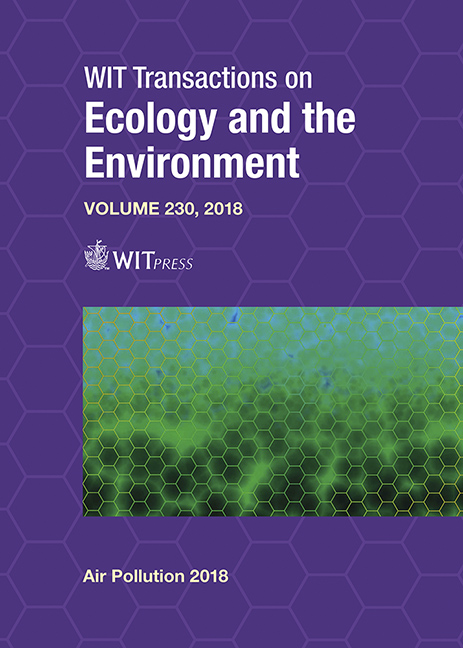A QUASI-EXPERIMENTAL STUDY ON THE EFFECTIVENESS OF A FUEL-EFFICIENT COOKSTOVE IN REDUCING PERCEIVED RESPIRATORY SYMPTOMS AMONG MOTHERS OF PUROK 6 IN BRGY, SANTA CRUZ, THE PHILIPPINES
Price
Free (open access)
Transaction
Volume
230
Pages
10
Page Range
291 - 300
Published
2018
Paper DOI
10.2495/AIR180271
Copyright
WIT Press
Author(s)
BENEDICTO AGUILAR, ZENAS APAL, RIZZA DE JESUS, MONICA ERNI, KARINA LIPARDO, JANINE RAFAEL, LANCE SESE, HENRIETTA DELA CRUZ
Abstract
Indoor cooking with solid biomass fuels is a daily practice in 30% of poor Filipino households, contributing to a 76% accruable burden of respiratory diseases. As indoor air pollution is a worsening burden in the Philippines, this study aimed to determine whether the use of a Fuel-Efficient Stove (FES) would reduce exposure and perceived respiratory symptoms, as compared with the traditional Three-Stone Fire (TSF) stoves, in two sub-units (30 households each) of Brgy. Sta. Cruz, Sto. Tomas, Batangas. Methodology. The study utilized a quasi-experimental interventional design. A laboratory analysis comparing the FES and TSF carbon monoxide (CO) point emission levels, and performance was done. Mothers aged 25 years old and above using solid biomass fuels indoors were selected using simple random sampling. The participants answered a questionnaire on perceived respiratory symptoms, and 10% from the experimental group was tested for ambient and stove CO concentrations before and after the stove deployment. Results. Results showed that the FES significantly reduced CO concentrations for both in the laboratory setting (77.18%) and in the household setting (overall 79.32%). The Water Boiling Test for stove efficiency showed that, in the laboratory, the FES boiled water 43.16% faster, and consumed 27.59% less wood per minute while heating 60.16% more water per gram of wood by transmitting 171.43% more heat to the pot, as compared to the TSF. After the three-month period, there were observed decreases in almost all respiratory symptoms in the experimental group, but these were not statistically significant. Conclusion. The FES was found to be more efficient and produced less emissions but did not significantly decrease respiratory health symptoms in the study population.
Keywords
household indoor air pollution, respiratory health, solid biomass fuel use, clean fuel-efficient cookstove, user perception





